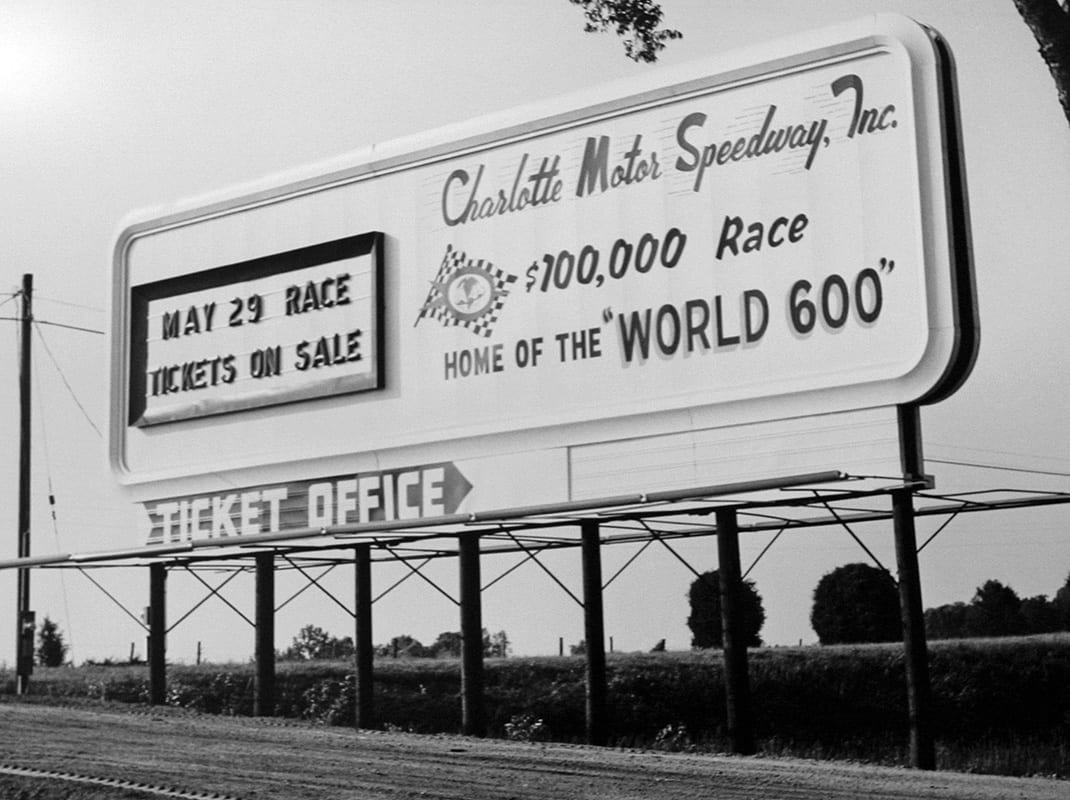As the sport of NASCAR stock car racing grew during the late 1950s, star driver Curtis Turner and occasional short-track promoter Bruton Smith were in a race of their own.
The two were working around the clock to secure funding to realize their individual dreams of building a superspeedway for stock car racing in the Charlotte, North Carolina, area. Turner had his eyes on a piece of property northeast of the Queen City, while Smith hoped to build a track on the opposite side of town in the Pineville area.
Eventually, the two joined forces and Charlotte Motor Speedway was the result.
Overcoming numerous obstacles and delays during construction of the uniquely shaped 1.5-mile race track, Charlotte Motor Speedway finally celebrated its grand opening a few weeks later than the anticipated Memorial Day weekend debut.
On June 19, 1960, 60 competitors battled each other and a deteriorating asphalt racing surface as Joe Lee Johnson won the longest and richest stock car race in history.
Even though the crowds for the track’s two annual NASCAR races were significant, the finances didn’t add up due to the amount of debt incurred in building the facility.
Smith and Turner were soon forced to file bankruptcy and both went on to pursue other business ventures while the track was managed under court supervision.
Smith found tremendous success in the automotive industry but always kept a close eye on the race track he helped carve from the North Carolina countryside. He eventually began buying stock in the revived company and by the mid-1970s had accumulated a controlling interest in the speedway.
Smith was back in charge and he had a vision for the future of racing at Charlotte Motor Speedway.
He hired H.A. “Humpy” Wheeler as general manager in October 1975 and together they implemented Smith’s vision, as the track became known as the “Mecca of Motorsports.” From being the first auto racing facility to have condominiums overlooking the track to being the first modern superspeedway to host racing under the lights, the iconic 1.5-mile quad-oval has continuously elevated industry standards for amenities and entertainment.
As Charlotte Motor Speedway celebrates its 60th anniversary this season, the following list touches on several historical firsts in the speedway’s rich racing history:

600 MILES: Charlotte Motor Speedway became the first track to host a 600-mile NASCAR-sanctioned event on June 19, 1960. Now known as the Coca-Cola 600, the race is still the longest and one of the most prestigious on the NASCAR Cup Series schedule.
PLUSH TOWER: Smith Tower, completed in 1988, was the first high-rise office building to be built into an existing speedway grandstand structure. The seven-story, $20 million tower houses the speedway’s administrative offices, ticket operations and gift shop, in addition to leased office space.
JOIN THE CLUB: Also opened in 1988 at Charlotte Motor Speedway, The Speedway Club was the first exclusive, members-only club to be constructed at an auto racing facility in the eastern United States. Featuring restaurant seating for 240 people, ballroom seating for 350 and a 2,436-seat enclosed clubhouse, The Speedway Club occupies two stories of Smith Tower.
DASH FOR CASH: The 1987 edition of the NASCAR All-Star Race finished with a 10-lap “dash for cash” – a first for this format in major league auto racing. The shootout has continued through the years and a 15-lap final stage will decide the winner of this year’s 36th running of the All-Star Race.
CONDOS RISE: Charlotte Motor Speedway added condominiums in 1984, with 40 trackside units offered for sale at an average price of $115,000. Within six months the asking price climbed to $175,000, reaching $225,000 a year later. Twelve additional condos were added in 1990.
SAFETY TRUCK: The speedway’s self-contained crash truck – equipped with firefighting, cutting and other safety equipment built into the vehicle – was a first when it was introduced.
LIGHT IT UP: Charlotte Motor Speedway became the first modern superspeedway to offer night racing in 1992 after installing a $1.7 million, 1,200-fixture permanent lighting system developed by MUSCO Lighting of Oskaloosa, Iowa. The system was different from any installed at other race tracks in that it used a system of adjustable mirrors surrounding the inside of the track to moderate the light aimed at drivers.
Click below to keep reading.
